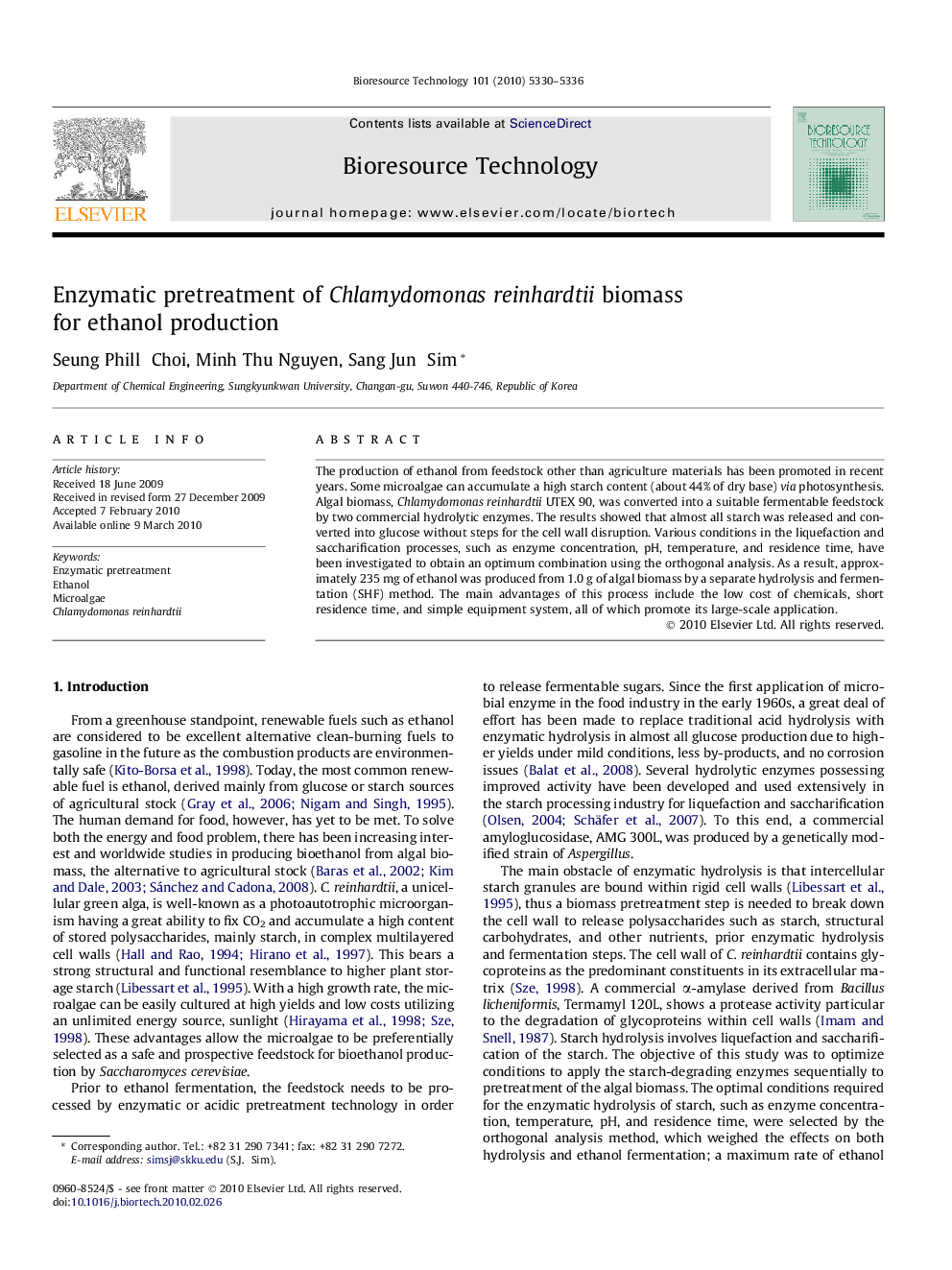| Article ID | Journal | Published Year | Pages | File Type |
|---|---|---|---|---|
| 682960 | Bioresource Technology | 2010 | 7 Pages |
The production of ethanol from feedstock other than agriculture materials has been promoted in recent years. Some microalgae can accumulate a high starch content (about 44% of dry base) via photosynthesis. Algal biomass, Chlamydomonas reinhardtii UTEX 90, was converted into a suitable fermentable feedstock by two commercial hydrolytic enzymes. The results showed that almost all starch was released and converted into glucose without steps for the cell wall disruption. Various conditions in the liquefaction and saccharification processes, such as enzyme concentration, pH, temperature, and residence time, have been investigated to obtain an optimum combination using the orthogonal analysis. As a result, approximately 235 mg of ethanol was produced from 1.0 g of algal biomass by a separate hydrolysis and fermentation (SHF) method. The main advantages of this process include the low cost of chemicals, short residence time, and simple equipment system, all of which promote its large-scale application.
